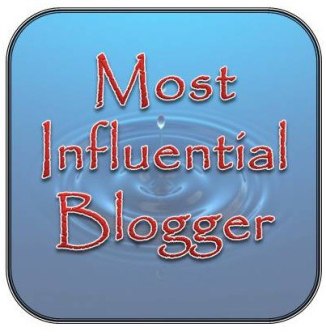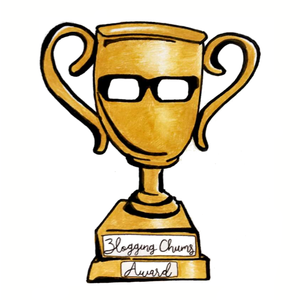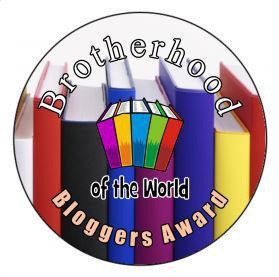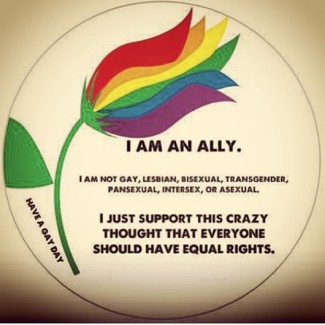Is Soy In Our Food Making Us Sick?
Earlier this year, an itchy rash appeared on my left arm, then my right arm. The appearance of the skin indicated to me that it was an allergy. I had not eaten anything unusual, so was very puzzled what could be causing the reaction.
Then, my doctor placed me on an anti-biotic. The rash went away. Also this year, I’ve had recurring sinus infections more than usual. The rash on my arms reappeared about two weeks ago. It was worse than the first time.
Last week Friday while getting ready to take my second dose of Vitamin D3, I happened to read the ingredients. Mostly, I order vitamins and supplements from a company that advertises no preservatives, artificial coloring, etc. In fact, I’ve ordered from that same company for years and trusted their products. Such it was with Vitamin D3 which I began taking this year.
For those unfamiliar, Vitamin D3 contains vitamin D, calcium which is necessary for the body to process vitamin D, and magnesium.
On the label of the Vitamin D3 was “calcium source; oyster shells”. I am allergic to shellfish! So all year, I’ve been consuming something in the Vitamin D3 that I am allergic to and didn’t know it. It’s been 6 days since I took that brand of Vitamin D3. The rash is clearing. My breathing is no longer shallow. Then I noticed another ingredient in my vitamins. Soy.
 That caused me to start researching soy, and I was shocked by what I found. I stopped taking those vitamins that contain soy and since doing so, my sinuses have immensely improved. I began to check the ingredients on other things in my cabinets and refrigerator. A short list of what I discovered contains soy, or soybeans, or soybean oil includes:
That caused me to start researching soy, and I was shocked by what I found. I stopped taking those vitamins that contain soy and since doing so, my sinuses have immensely improved. I began to check the ingredients on other things in my cabinets and refrigerator. A short list of what I discovered contains soy, or soybeans, or soybean oil includes:
Canned tuna in water; Green Giant brand frozen broccoli, including with cheese, and with carrots; Three different brands of salad dressing; Miracle Whip; Worchester Sauce; bread, including hamburger and hot dog buns.
It’s all in the garbage now.
Since part of my reason to learn about soy is to decide on what is best for me as a cancer patient, I began by researching soy and breast cancer. Is soy safe or not? That depends on what you read. The Mayo Clinic says:
“Studies show that eating a moderate amount of soy foods does not increase risk of breast cancer — or other types of cancer. A moderate amount is considered one to two servings a day of whole-soy foods, such as tofu, soy milk and edamame. Soy contains protein, isoflavones and fiber, all thought to provide health benefits.”
“So where did the idea come from that soy increases breast cancer risk? Isoflavones, which are found in soy, are plant estrogens. High levels of estrogen have been linked to an increased risk of breast cancer. However, food sources of soy don’t contain high enough levels of isoflavones to increase the risk of breast cancer.”
Well, that’s great! But, what about when the vitamins you take contain soy, the sandwich you made for lunch has soy in the bread and Miracle Whip or mayonnaise, and the frozen vegetables you might have for dinner contain soy? If you have a scoop of ice cream for dessert, chances are that it also contains soy.
Then I went to WebMD where it says;
“These plant-based chemicals are similar in structure to estrogen. Most breast cancers are sensitive to estrogen (or, as doctors say, “estrogen-receptor-positive” or “ER-positive,”) which means that estrogen fuels their growth.
“So there was a fear that soy could act as estrogen in the body and stimulate cancer cells,” Meyers says. “It was spread on blogs, and people would tell each other to avoid soy.”
But a steady stream of studies showed that a diet high in soy didn’t increase the chances of developing breast cancer and may even reduce that risk.
In one study of more than 73,000 Chinese women, researchers found that those who ate at least 13 grams of soy protein a day, roughly one to two servings, were 11% less likely to develop breast cancer than those who got less than 5 grams.
“In Asian cultures, where people eat a lot of soy from a young age, there are lower rates of breast cancer,” Meyers says. And in those societies, people still eat soy in its traditional forms.”
Okay, does this mean that I need to keep a daily diary of how much soy is in each foodstuff that I eat and vitamins that I take in order to know if it’s more than 13 grams? How do I figure out soy content by serving size because I’m not going to eat an entire bag of frozen vegetables, or an entire can of tuna?
Then, I continued reading and it says:
“Researchers aren’t certain how large amounts of soy affect breast cancer risk. In one early study, soy supplements were shown to “switch on” genes that encourage cancer growth in women with early-stage breast cancer.”
Back to square one. However, the above seems to agree with information on breastcancer.org;
“While past research results have been mixed, a small study done by researchers at the Memorial Sloan Kettering Cancer Center and Weill Cornell Medical College suggests that for some women, adding a medium amount of soy to their diets turns on genes that can cause cancer to grow.”
So now we’ve gone from “13 grams” not being dangerous to “a medium amount” turning on genes that can cause cancer to grow.
 A test, study was performed, and according to the researchers, women were given about 4 cups of soy milk per day. They believe that is the equivalent of what people regularly eat of soy in one day. So, going back to WebMD, the doctor there said that most women intake the equivalent of one cup of soy milk a day whereas the Memorial Sloan Kettering Cancer Center and Weill Cornell Medical College say that the average person takes in the equivalent of 4 cups of soy milk per day. In other words, if we rely on the studies performed by the Memorial Sloan Kettering Cancer Center and Weill Cornell Medical College, then we are getting too much soy in our foods and condiments.
A test, study was performed, and according to the researchers, women were given about 4 cups of soy milk per day. They believe that is the equivalent of what people regularly eat of soy in one day. So, going back to WebMD, the doctor there said that most women intake the equivalent of one cup of soy milk a day whereas the Memorial Sloan Kettering Cancer Center and Weill Cornell Medical College say that the average person takes in the equivalent of 4 cups of soy milk per day. In other words, if we rely on the studies performed by the Memorial Sloan Kettering Cancer Center and Weill Cornell Medical College, then we are getting too much soy in our foods and condiments.
Men, you are not exempt from the concerns about soy. A man, Steve Del Gardo wrote an article titled “Soy and Breast Cancer. Neither is a Friend. “, where he shares his diagnosis of breast cancer and his use of soy;
“Anyway, the reason I am talking ill of soy is because it is likely the very reason I got breast cancer. Before I was diagnosed, I was drinking soy protein milkshakes twice per day for more than a year while I was exercising. Apparently, soy mimics estrogen and increases estrogen levels in our bodies. My cancer was estrogen receptive. (I had high levels of estrogen.) By the way, there is no history of breast cancer in my family and I tested negative for the BRCA gene (no mutations).”
Steve Del Gardo tells his story on his website. Wow! Can I relate to what he says about the wait. In 2013, Steve started an awareness foundation for men with breast cancer. According to his research, since 2013, 14,000 men have been diagnosed with breast cancer, and 2,300 have died.
People process natural soy in tofu, miso, and soy milk differently than the kind that’s added to processed foods. The soy protein in supplements, protein powders and meat substitutes IS NOT the same as what is called “natural soy”. It’s a more concentrated form of soy which means, it’s a higher dose.
And, why can’t consumers find all information about soy on one website? This is what I mean. The study involving soy, breast cancer and women was conducted on Chinese women. It says “traditional forms” which means there must be untraditional forms, right? The soy added to food sold in America’s grocery stores, and in our vitamins, is not the “traditional form” of soy found in China.
In 2014, Mother Jones reported that soybeans are the second largest U.S. crop after corn. The U.S. grows more soybeans than any other country with the exception of Brazil. According to the U.S. Department of Agriculture, more than 90 percent of the soybeans that are grown on U.S. farms are genetically engineered.
“After harvest, the great bulk of soybeans are crushed and divided into two parts: meal, which mainly goes into feed for animals that become our meat, and fat, most of which ends up being used as cooking oil or in food products. According to the US Soy Board, soy accounts for 61 percent of American’s vegetable oil consumption.”

By 2017, soy accounted for 70 percent of food products in the U.S., including meat, because farmers feed livestock with genetically engineered soybeans. GMO. The Mother Jones’ article goes into what that is.
So, there we have it. The soy that Americans are getting in their food is GMO type – not “traditional, not “conventional,” not “natural”.
GMO soy is in our cereals, breads, tuna, frozen vegetables, salad dressings and vitamins. How do we get away from it?
On Friday when I received my diagnosis, I happened to mention to the nurse about soy and breast cancer. She shared some of her health information with me and said that she was told after surgery to reduce or eliminate the amount of soy in her diet. It’s my impression that had I not brought up the subject, she would not have told me what that medical system believes about soy.
On Saturday, what normally takes an hour to shop for grocery took more than 2 hours because every label was read and everything with soy was placed back on the shelf or in the freezer. I spent about $5.00 more than usual because of purchasing soy free brands. As I identify brands that are soy free, shopping should be easier and faster. I’m making a list and like Santa, when going into the grocery store, checking it twice.
Posted on 09/23/2018, in cancer, Potpourri, Uncategorized and tagged allergies, breast cancer, GMO, soy, soy beans. Bookmark the permalink. 15 Comments.







































I wonder if the studies you read mentioned the fact that the chemicals spread on soy beans and corn are dangerous? I remember read warning labels on the containers for the chemicals farmers spread on their fields when I lived in rural Illinois. Since then, I have tried to stick to organic foods even though it’s more expensive, but even so, there are no guarantees about food safety.
LikeLiked by 2 people
Carol,
The article published in Mother Jones goes into the use of GMO. True, organic foods are more expensive, and until several weeks ago when I started researching soy, I would buy whatever and take Milk Thistle to clean the liver of things that don’t belong in the body. But then, I discovered that the brand of Milk Thistle that I’ve taken since around 2006 contains soy. While I was detoxing artificial additives and chemicals from my body, I was adding the plant estrogen from soy without knowing about it. (sigh)
LikeLiked by 2 people
Dear Xena,
You are singing to the choir. I do prepare most of my own meals from scratch but I have a weakness for sweets. I will be checking for any soy ingredients.
Thanks for sharing this important information about soy. You may very well save some lives.
Please let us know how you are doing.
Hugs, Gronda
LikeLiked by 2 people
Gronda,
Last week, I exhausted my prepared meals that I froze so I wouldn’t have to cook everyday and could just warm up food. This evening, I have to rattle the pots and pans to prepare dinner, and I just don’t feel up to it. (sigh) The courage to muster up the energy will no doubt come as my stomach growls. LOL!
I hope that the information will save some lives, or at least give people knowledge so they know what to look for not only themselves, but also in their children and/or grandchildren. I’ve spoken with some parents in the past week who shared about their sons developing breasts, and one son is 10 years old. Well, if he eats cereal every morning with a slice of toast, and the store bought mac and cheese that he loves after school, he’s getting doses of estrogen from soy.
Based on another article I read, I guess that the companies that manufacture Viagra and Cialis are happy rolling in the money, because it’s being said that the estrogen in soy is effecting the reproductive organs of adult men.
LikeLiked by 1 person
Wow, this is eye-opening! I hope your rash and sinuses clear up soon. I cook most of my meals from scratch, and my diet is heavy on fresh vegetables and fruit, so my soy intake is probably low; but, now I’m concerned about the vegetable oil I’m using. I’ve been telling people for years to stay away from processed foods, and the information you’ve provided here only reinforces my apprehension.
LikeLiked by 1 person
Robert,
That’s a good recommendation to others to stay away from processed foods. Since I retired, processed and fast food was reduced in my household because I have more time to prepare meals from scratch. I do have the tendency of buying frozen vegetables unless I’ve planned a meal for the next day or so. Going to town more than once a week to the grocery stores can be a real pain. Who would have thought that Green Giant puts soy in frozen vegetables? Bird’s Eye Brand does not, at least for their green beans. Instead of vegetable oil, have you tried virgin olive oil?
Thanks for the comment.
LikeLiked by 2 people
I primarily use extra-virgin olive oil, but its smoke-point temperature threshold is unsuitable for high temperature cooking techniques (e.g. searing, stir-fry, etc.).
Fresh produce can be stored for much longer periods, but it requires some study to learn how to do it as each item requires different methods. Kale and broccoli, for example, can easily be kept refrigerated for a week or so if vacuum sealed (no machine is necessary). I go grocery shopping no more than 4 times a month and I always have fresh veggies on hand.
LikeLiked by 1 person
Robert,
I have much to learn about preserving fresh vegetables and a short time to learn it all. Today, I learned that I have to eliminate sugar and that includes fruit and fruit juices (but not melons). So, the bottles of cranberry and apple juices that I bought this weekend will have to stay for relatives when they visit. And, if they don’t come over soon and eat the plums and oranges, I will give those to my son to take to his job for his coworkers.
Thanks for the tip about kale and broccoli, especially the broccoli because it’s one of my faves.
LikeLiked by 1 person
Hi Xena, Please please get well soon. Let us know if there is anything we can do for you. We are praying for your speedy recovery. XOXO
Supa
LikeLiked by 1 person
Supabutterfly,
Thanks for your prayers. Today, I got lots of information from the nurse navigator and am meeting with the surgeon to schedule surgery to put in a port. “I can do all things through Christ who gives me the strength.”
LikeLiked by 1 person
Amen
LikeLike
Xanthan gum (a thickening agent and food stabilizer) may be derived from soy
LikeLiked by 1 person
Thanks for that info. It’s no telling what Xanthan is in that we eat.
LikeLiked by 1 person
I’ve watched out for soy for quite a long time. Bottom line for me – GMO. I don’t want anything Monsanto has tapered with. There is an excellent book I learned a lot from – The GAP Syndrome – Gut and Psychology Syndrome. You can read a lot about it online. That book warned me about soy. They put a lot of crap in food and you have to wonder why?? There is no reason for a lot of things except somebody is making a fortune. Another thing I won’t touch is vegetable oil and it is in everything! You mentioned salad dressings. I make my own. It’s cheaper. Organic olive oil, vinegar, touch of brown mustard and touch of unrefined local honey. It’s wonderful.
LikeLike
Two additions to my GMO list are Prago and Pepperidge Farm. A problem in my neck of the woods is that stores are massive and far apart. I have to go to the other side of town for soy free bread. Which brings me to something else. I think people ate healthier when communities had local grocery stores, meat markets, and bakeries. I make a salad dressing much like you described, but I have a pure delight for Ranch dressing. I found a brand named Just Ranch, but the stores seem to sell out quickly and then go for weeks without any on the shelves.
When it comes to soy, I’ve found that some food products that don’t contain it today, contain it tomorrow. It’s really disgusting when having a soy allergy (or simply wanting to avoid soy), to have to read all the labels on everything before making a purchase. My son was in a store and thought I would like some variety with green tea when he say green tea with lemon. I didn’t assume that it was just tea and lemon so read the label. It contained soy — IN TEA! A friend and I discussed a theory that by adding soy into food and with GMO’s, the manufacturers and medical communities are creating a new generation of sick people. They might experience what I did — 3 years of recurring sinus infections with medical personnel treating me for environmental allergies when all the time, it was soy.
If I were 20 years younger, I would seriously look into opening a store with soy free products. The person who does that will have grateful consumers.
LikeLike